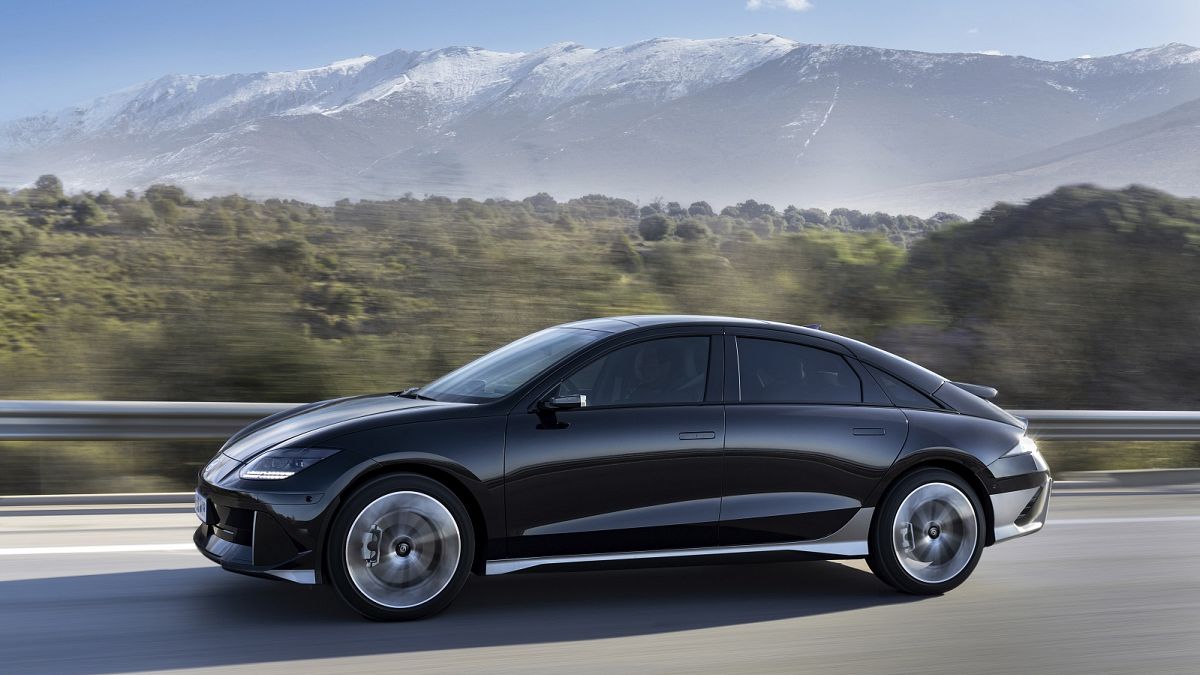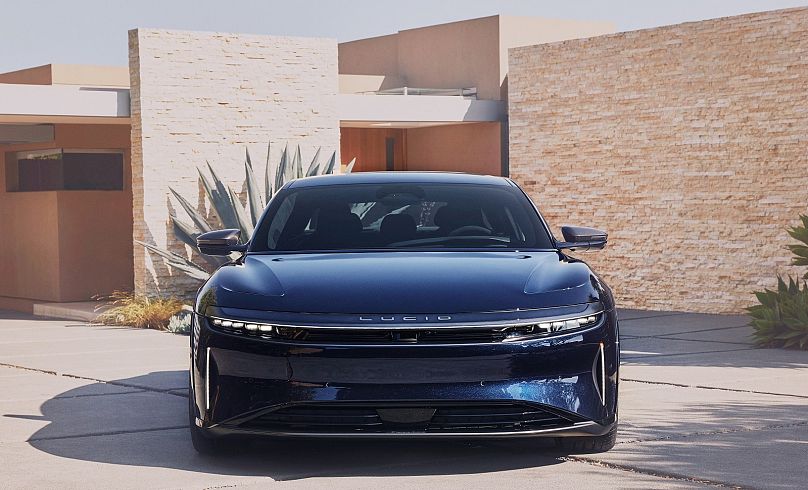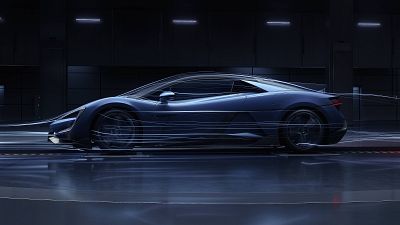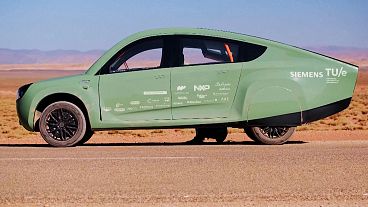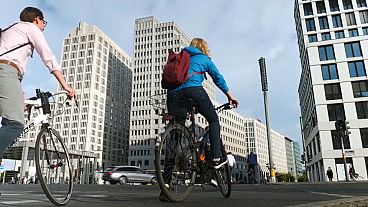Sales of bigger, heavier cars have never been higher. But as the EU pushes towards electrification, more efficient vehicles could spell the end for SUVs.
The transport sector is one of the major contributors to global climate change making up a quarter of the European Union's greenhouse gas emissions. It is also the only major sector where emissions are on the rise.
A significant share is from the personal use of cars. Despite this, sales of bigger and heavier cars have never been higher with sport utility vehicles (SUVs) accounting for nearly half of all new cars sold.
But as we move toward the electrification of the EU fleet, and with this a greater focus on the need for lighter, more aerodynamic, and efficient vehicles, could this spell the end of the conventional shaped SUV?
SUVs are much less efficient than hatchbacks or saloons due to their weight. Simply put, a heavy vehicle requires more energy to move than a smaller one. But do electric SUVs offer a good compromise?
The short answer is no, adding a battery to an already heavy vehicle is not the solution.
While electric SUVs may pollute less than equivalent-sized petrol or diesel ones when you consider the environmental impact over the entire life cycle of the vehicle, they have a substantial carbon footprint due to the quantity of materials used including rare metals and the energy needed to manufacture the large electric batteries required to power them.
Designs for new EVs can be simpler
The arrival of the automotive electric age has provided new opportunities for car designers and the push for efficiency is radically altering the shape of cars on our roads.
Free from the need to accommodate the traditional internal combustion engine (ICE) and its many components, the vehicle design and structure of an electric car can be considerably simplified. Optimising efficiency is key to increasing range, reducing battery weight, and overall cost.
Aerodynamics is the study of how air flows around and inside objects. In relation to cars, aerodynamics plays a significant role in a car's overall efficiency. Engineers measure a car's aerodynamic efficiency by its coefficient of drag (Cd), a measure of how easily air flows around the vehicle.
The lower the number, the more aerodynamic the car is. Car makers have known for decades about the benefits of reducing the aerodynamic drag coefficient in a car in order to achieve better fuel economy, higher top speed, and lower emissions.
The lower the Cd in an electric car the less energy it needs to move through the air so essentially you can squeeze more range from a battery pack.
To this end, car designers are opting for smoother shapes that cut through the air creating less drag.
Hyundai’s Ioniq 6, with its distinctive curves and a teardrop silhouette, achieves a Cd of just 0.21 and is one of the most aerodynamic and energy-efficient EVs on the market. By comparison, a Land Rover Defender has 0.38 coefficient of drag.
The prize for super efficiency goes to the solar-powered Lightyear 0, with a drag coefficient of 0.175. But with production halted by the Dutch car company earlier this year, the Lucid Air Dream Edition Range with a drag coefficient of 0.197 is the most aerodynamic electric car you can currently buy.
Experts divided on SUV's future
So, is it the end of the road for SUVs? Carmakers remain divided on the future of these large vehicles.
The Swedish car brand Volvo recently announced it would be dropping existing estate and saloon cars from its range in the UK in favour of larger SUVs.
But Peugeot’s CEO Linda Jackson believes that large, heavy vehicles are incompatible with the drive for electric cars. "Gone are the days when you have a big SUV, because they're a nightmare for aerodynamics," she recently told the UK Car magazine Autocar.
Similarly, Vincent Cobee, a former CEO of Citroen, also told Autocar that the demise of the SUVs is imminent and in the future, the popularity of SUVs is likely to be diminished by increased tax and regulations.
"[In the] fully electric world, you lose autonomy because of aerodynamics, so the link is much stronger. So anything which is high or squarish will have an immediate penalty to its autonomy in a battery EV world," he added.
Curbing the sales of heavier vehicles through taxes is already in operation in some countries. New cars registered in France are subject to a weight tax, introduced in 2021. All vehicles that weigh more than 1,800 kg are taxed at a rate of €10 for every additional kilogramme.
Curbs on SUVs
The US state of Washington, Montreal, and Norway have already adopted weight-based fees, and there are proposals to introduce these in New York and California.
In Paris, city councillors recently approved a measure to impose a higher parking charge for owners of big, heavy cars.
There are also safety concerns about heavier vehicles and the risks they pose to pedestrians and cyclists. Research published last month in the journal Traffic Injury Prevention found that cyclist injuries from crashes with SUVs were more severe than those from collisions with cars, particularly with respect to head injuries.
A previous study, from the same publication, concluded that SUVs remain disproportionately likely to injure or kill pedestrians compared with cars.
It seems unlikely that the SUV in its current form can continue to meet the requirements of a rapidly changing market.
SUVs are inefficient, they increase emissions, and can pose severe risks for vulnerable road users and their continued popularity threatens to undermine efforts to tackle the climate crisis.
As the demand for EVs increases so too does the need for critical materials necessary for batteries but this need can be reduced through advanced battery technologies and by efficiencies built into car design.
So, it seems in the future the boxy SUV shape will be confined to the motoring archives and labelled a relic of the age of "excessive consumption".
